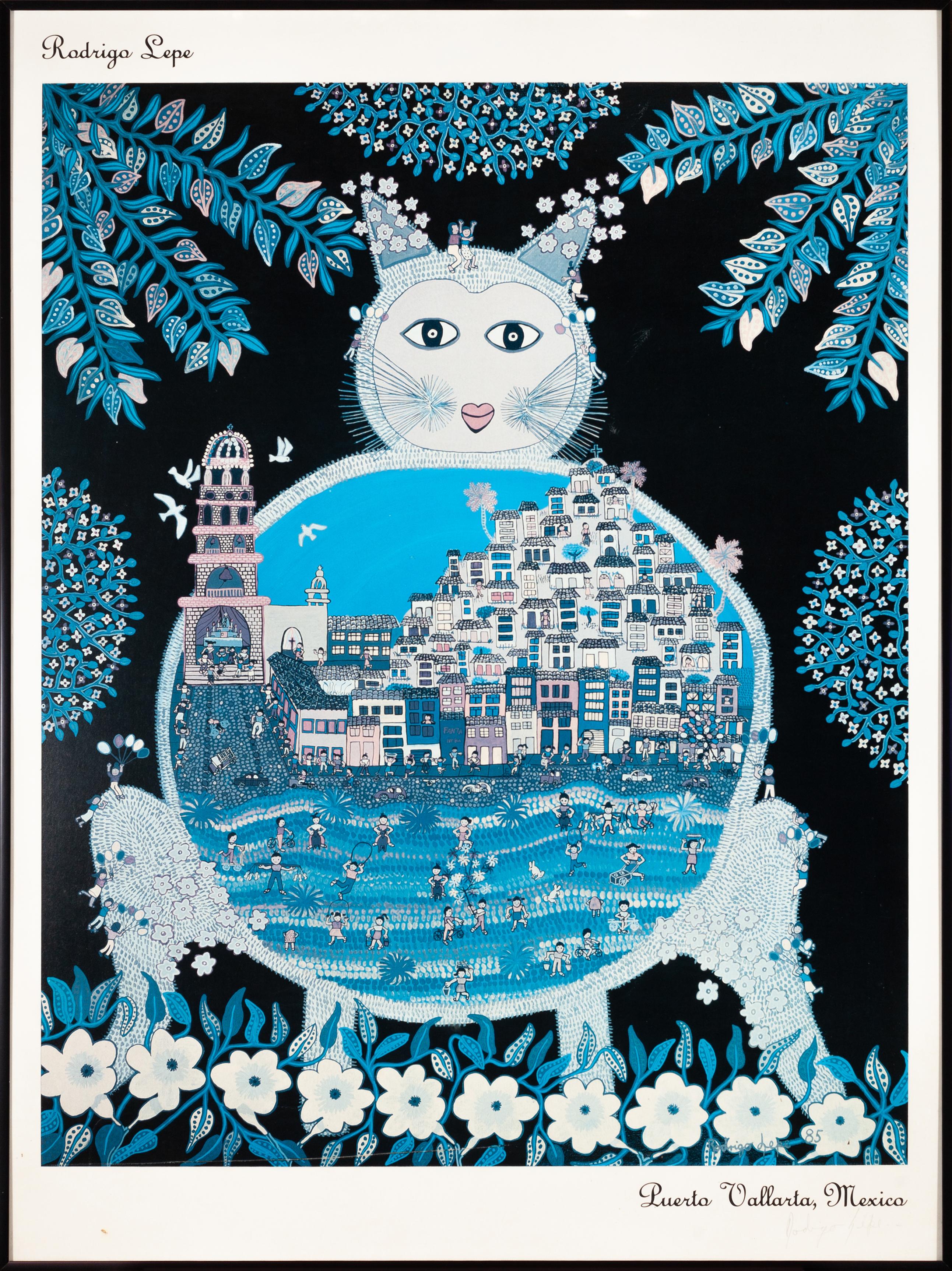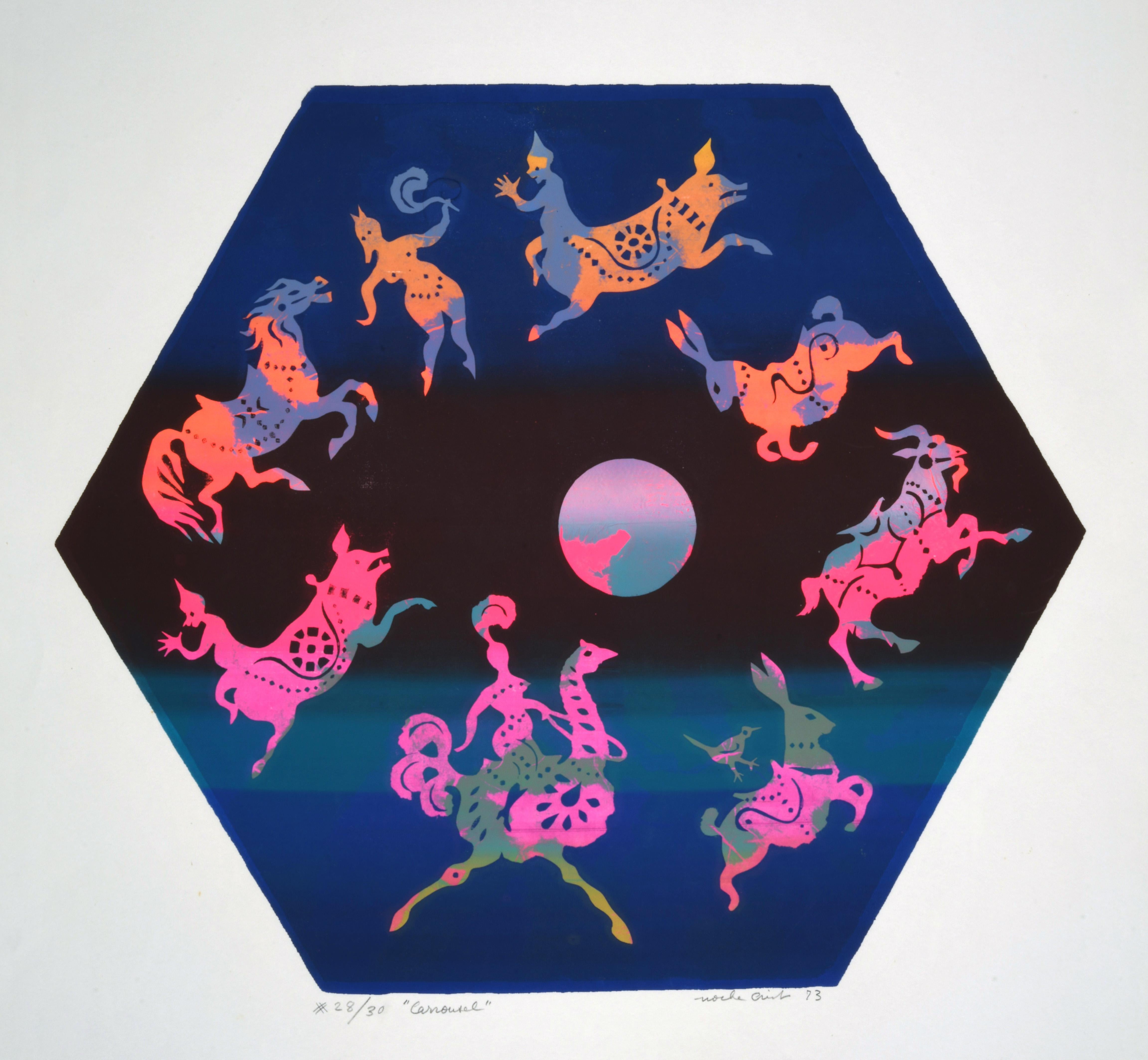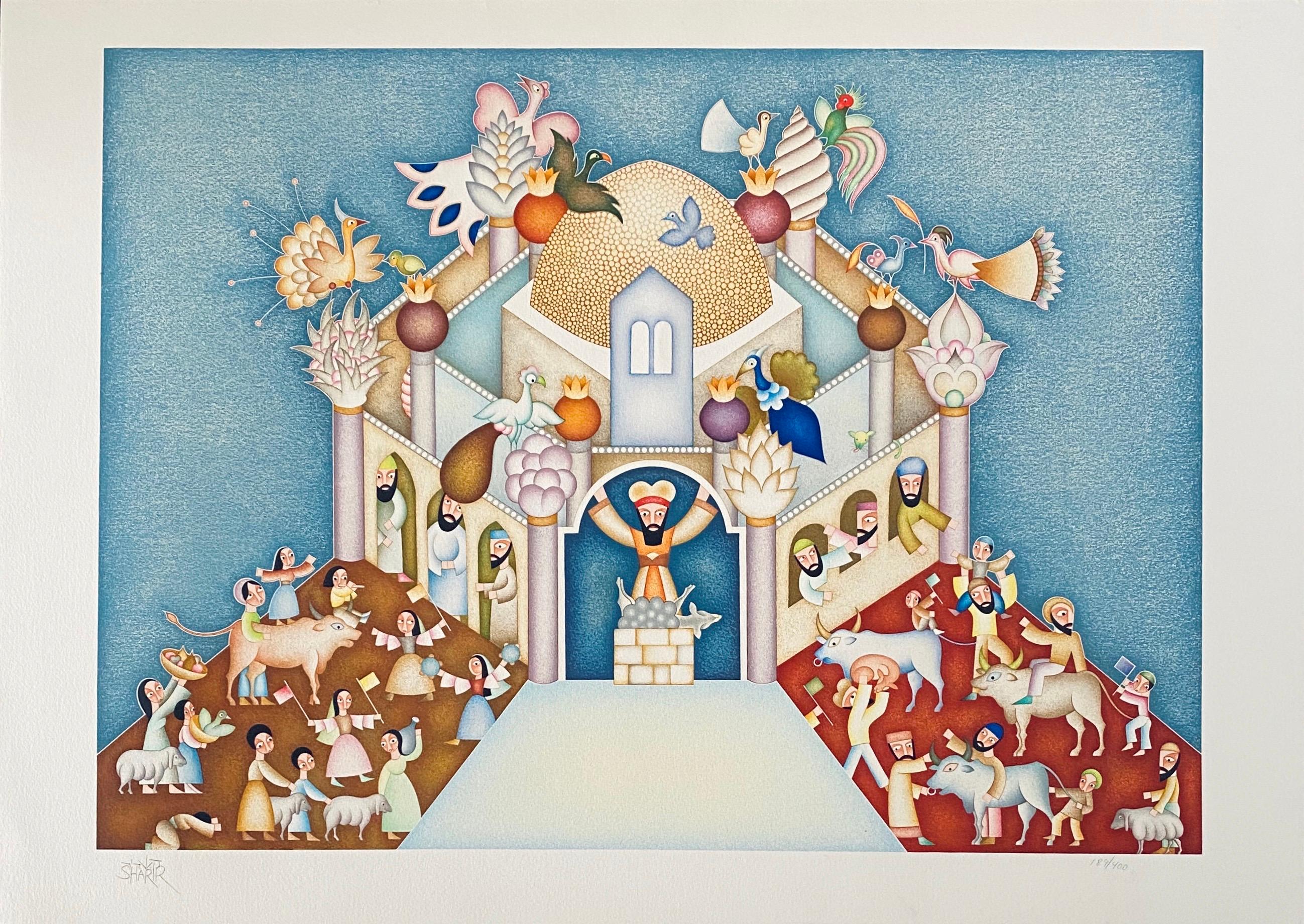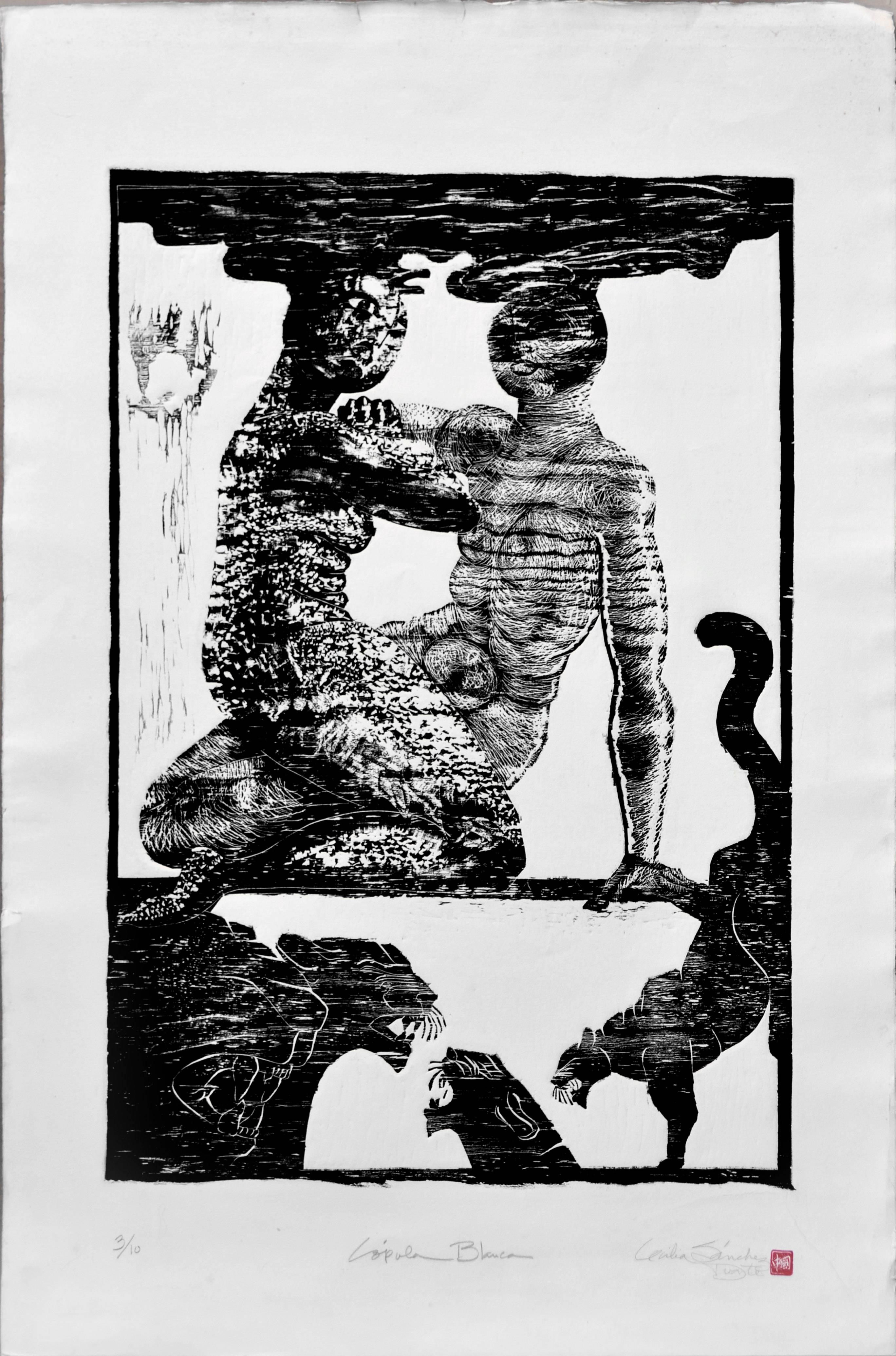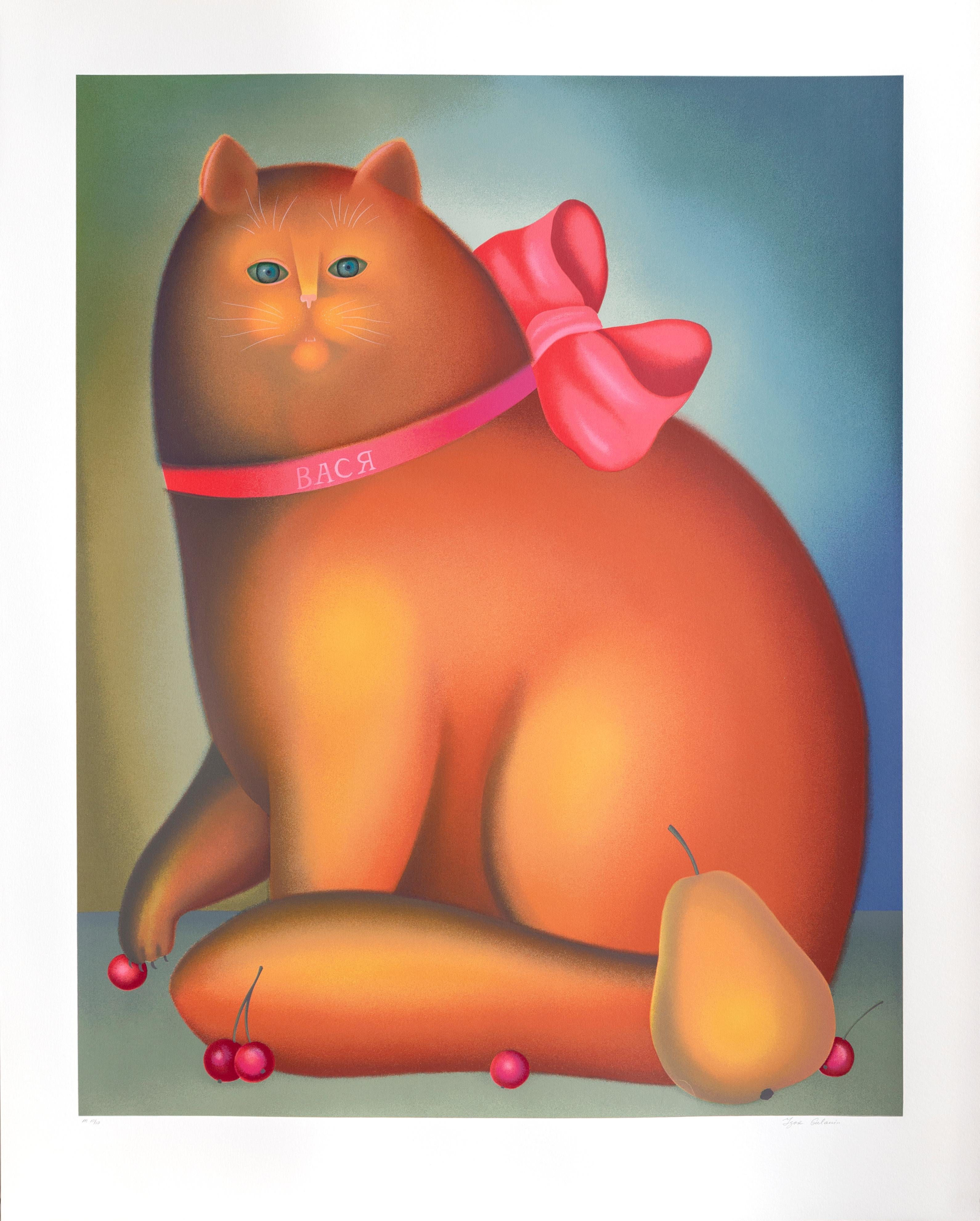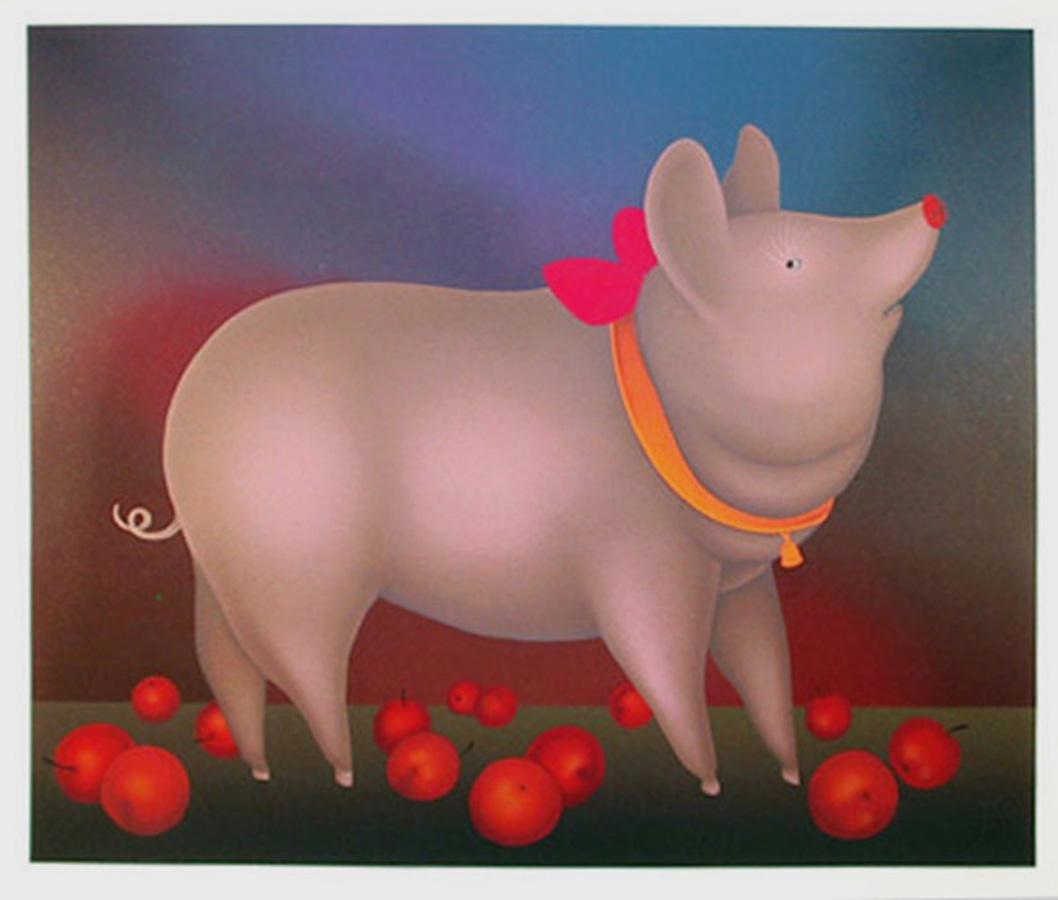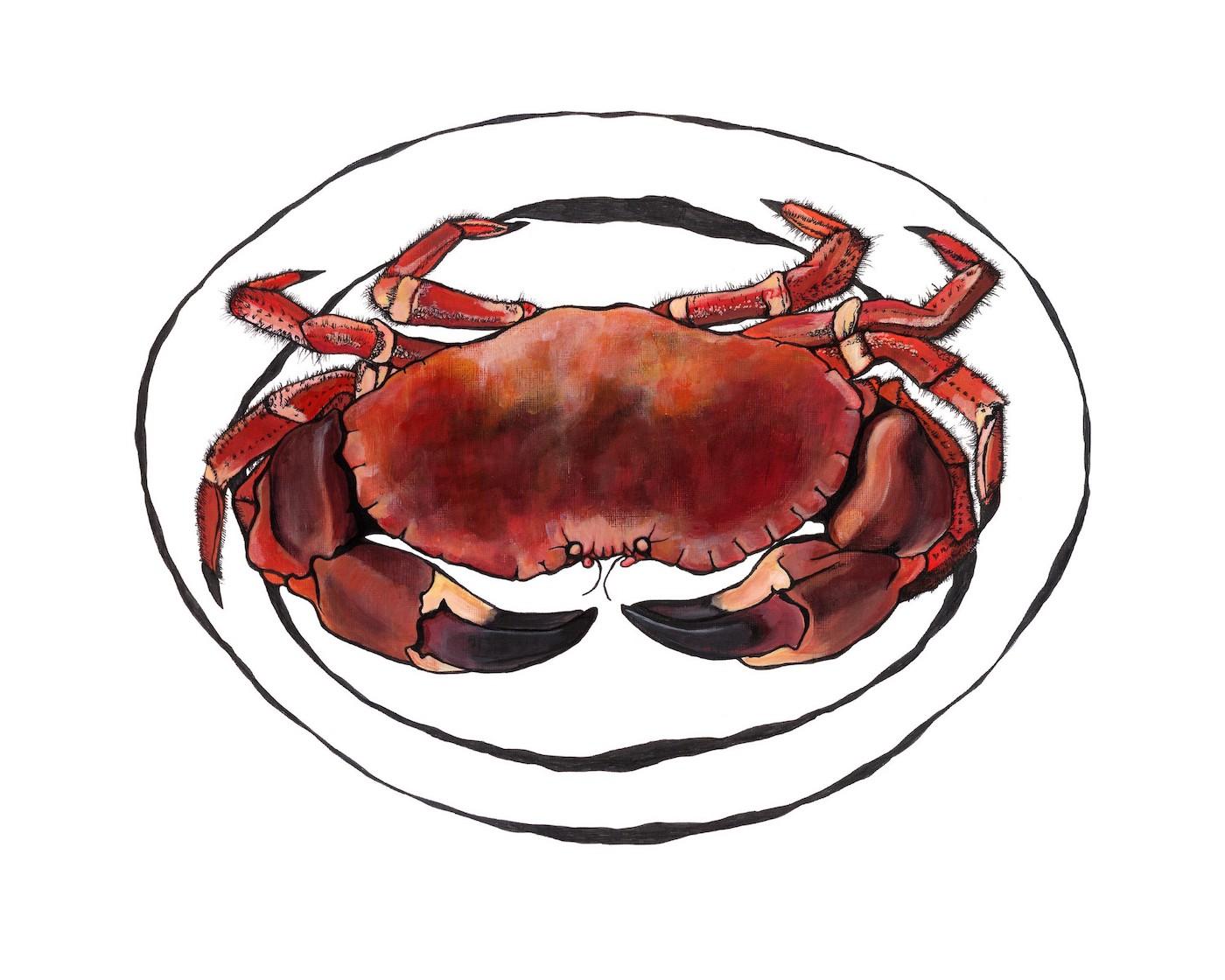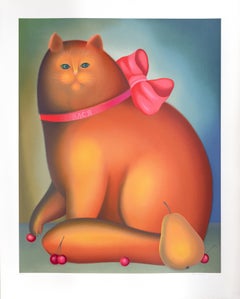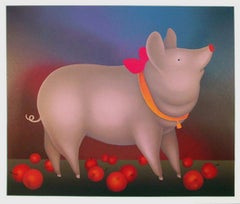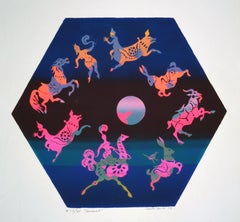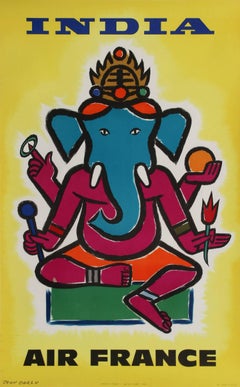
Air France - India, Print by Jean Carlu
View Similar Items
Want more images or videos?
Request additional images or videos from the seller
1 of 5
Jean CarluAir France - India, Print by Jean Carlucirca 1950
circa 1950
About the Item
- Creator:Jean Carlu (1900 - 1997, French)
- Creation Year:circa 1950
- Dimensions:Height: 39.5 in (100.33 cm)Width: 24 in (60.96 cm)
- Medium:
- Movement & Style:
- Period:
- Framing:Framing Options Available
- Condition:
- Gallery Location:Long Island City, NY
- Reference Number:1stDibs: LU4662267891
About the Seller
4.8
Platinum Seller
These expertly vetted sellers are 1stDibs' most experienced sellers and are rated highest by our customers.
Established in 1979
1stDibs seller since 2014
2,697 sales on 1stDibs
More From This SellerView All
- The Cat Fifer (after Manet) from the Metropolitan Cats Series by Fred BornetLocated in Long Island City, NYBornet's true passion dating back to his early years in Belgium, is cats. He has written and illustrated several books, among them: "Cats are Poets", "Cats are Clowns", "How to Raise a Unicat", and, most recently, the ultimate ballet book, "Pas de Cat". He is currently engaged in painting interpretations of famous masterpieces from Leonardo to Chagall, each endowed with an improbable, yet delightful, feline twist. The Cat Fifer (after Manet...Category
1980s Folk Art Animal Prints
MaterialsLithograph
- Cat with a Bow, Serigraph by Igor GalaninBy Igor GalaninLocated in Long Island City, NYArtist: Igor Galanin, Russian/American (1937 - ) Title: Cat with a Bow Year: circa 1985 Medium: Serigraph, signed and numbered in pencil Edition: 100 Size: 40.5 x 32.5 in. (102.87 ...Category
1980s Folk Art Animal Prints
MaterialsScreen
$760 Sale Price20% Off - Pig With Bow, Serigraph by Igor GalaninBy Igor GalaninLocated in Long Island City, NYArtist: Igor Galanin, Russian/American (1937 - ) Title: Pig with Pink Bow Year: circa 1985 Medium: Serigraph, signed and numbered in pencil Edition: 100, HC XXX Paper Size: 33.5 i...Category
1980s Folk Art Animal Prints
MaterialsScreen
$760 Sale Price20% Off - Cat and the FiddleLocated in Long Island City, NYAn illustration of a black cat in a beret playing an upright bass. Behind him is a cow gracefully leaping over a moon with a long nose and smiling face. In one corner, a plate runs hand in hand with a spoon. From the Mother Goose Portfolio, this piece is signed and numbered by the artist. Cat and the Fiddle...Category
1990s Folk Art Animal Prints
MaterialsScreen
- Hens, Serigraph by Victor Delfin 1980By Victor DelfinLocated in Long Island City, NYThis print was created by Peruvian artist Victor Delfin. Delfin found the source of his inspiration in the ancient Paracan culture of Peru, part of the broader Incan civilization. De...Category
1980s Folk Art Animal Prints
MaterialsScreen
- Condor II, Etching by Victor DelfinBy Victor DelfinLocated in Long Island City, NYThis print was created by Peruvian artist Victor Delfin. Delfin found the source of his inspiration in the ancient Paracan culture of Peru, part of the broader Incan civilization. De...Category
1980s Folk Art Animal Prints
MaterialsEtching
$600 Sale Price20% Off
You May Also Like
- Puerto Vallarta (Cat)Located in Columbia, MORodrigo Lepe Puerto Vallarta (Cat) 1985 Lithograph (poster) Open edition 31 x 23 inches, 31.25 x 23.25 (framed) Hand-signed in pencil lower right rectoCategory
20th Century Folk Art Animal Prints
MaterialsLithograph
- Feeding the RavensLocated in San Francisco, CAThis artwork titled "Feeding the Ravens" 1997 is a color offset lithograph on paper by noted American artist Rie Mounier Munoz, 1921-2015. It is hand signed and numbered 29/950 in pencil by the artist. The image size is 9.65 x 8.35 inches, sheet size is 13.85 x 12.25 inches. It is in excellent condition, has never been framed. About the artist: Alaska painter Rie Mounier Munoz was the child of Dutch parents who immigrated to California, where she was born and raised. She is known for her colorful scenes of everyday life in Alaska. Rie (from Marie) Munoz (moo nyos), studied art at Washington and Lee University in Virginia. In 1950, she traveled up the Inside Passage by steamship, fell in love with Juneau, and gave herself until the boat left the next day to find a job and a place to live. Since then Juneau has been home to Munoz. She began painting small vignettes of Alaska soon after arriving in Juneau, and also studied art at the University of Alaska-Juneau. Munoz painted in oils in what she describes as a "painstakingly realistic" style, which she found stiff and "somewhat boring." Her breakthrough came a few years later when an artist friend introduced her to a versatile, water-soluble paint called casein. The immediacy of this inexpensive medium prompted an entirely new style. Rie's paintings became colorful and carefree, mirroring her own optimistic attitude toward life. With her newfound technique she set about recording everyday scenes of Alaskans at work and at play. Of the many jobs she has held journalist, teacher, museum curator, artist, mother, Munoz recalls one of her most memorable was as a teacher on King Island in 1951, where she taught 25 Eskimo children. The island was a 13-hour umiak (a walrus skin boat) voyage from Nome, an experience she remembers vividly. After teaching in the Inupiat Eskimo village on the island with her husband during one school year, she felt a special affinity for Alaska's Native peoples and deliberately set about recording their traditional lifestyles that she knew to be changing very fast. For the next twenty years, Rie practiced her art as a "Sunday painter," in and around prospecting with her husband, raising a son, and working as a freelance commercial artist, illustrator, cartoonist, and curator of exhibits for the Alaska State Museum. During her years in Alaska, Munoz has lived in a variety of small Alaskan communities, including prospecting and mining camps. Her paintings reflect an interest in the day-to-day activities of village life such as fishing, berry picking, children at play, as well as her love of folklore and legends. Munoz says that what has appealed to her most were "images you might not think an artist would want to paint," such as people butchering crab, skinning a seal, or doing their laundry in a hand-cranked washing machine. In 1972, with her hand-cut stencil and serigraph prints selling well in four locations in Alaska, she felt confident enough to leave her job at the Alaska State Museum and devote herself full time to her art. Freed from the constraints of an office job, she began to produce close to a hundred paintings a year, in addition to stone lithograph and serigraph prints. From her earliest days as an artist, Rie had firm beliefs about selling her work. First, she insisted the edition size should be kept modest. When she decided in 1973 to reproduce Eskimo Story Teller as an offset lithography print and found the minimum print run to be 500, she destroyed 200 of the prints. She did the same with King Island, her second reproduction. Reluctantly, to meet market demand, she increased the edition size of the reproductions to 500 and then 750. The editions stayed at that level for almost ten years before climbing to 950 and 1250. Her work has been exhibited many solo watercolor exhibits in Alaska, Oregon and Washington State, including the Charles and Emma Frye Art Museum, Alaska State Museum in Juneau, Anchorage Historical and Fine Arts Museum, Tongass Historical Museum in Ketchikan, and Yukon Regional Library in Whitehorse; Yukon Territory, and included in exhibits at the Smithsonian Institute and Russell Senate Office Building in Washington, D.C. Munozs paintings have graced the covers of countless publications, from cookbooks to mail order catalogs, and been published in magazines, newspapers, posters, calendars, and two previous collections of her work: Rie Munoz...Category
Late 20th Century Folk Art Animal Prints
MaterialsLithograph
- "Carousel"Located in Washington, DCSilkscreen work by Noche Crist (1909- 2004). Marked in pencil 28/30 lower left. Printed in 1973 by the artist. Image is from her "Carrousel" series. Catalogue of a postumous retrospe...Category
1970s Outsider Art Animal Prints
MaterialsPaper, Ink
- Bat in the meadow. 1982. Paper, linocut, 20x34 cmBy Dainis RozkalnsLocated in Riga, LVBat in the meadow. 1982. Paper, linocut, 20x34 cm imprint size 10x25,5 cm total page size 20x34cm Dainis Rozkalns (1928 - 2018) Artist, graphic artist, illustrator of folklore and ...Category
1980s Folk Art Animal Prints
MaterialsPaper, Linocut
- Countryside. 1984. Paper, linocut, 20x34 cmBy Dainis RozkalnsLocated in Riga, LVCountryside. 1979. Paper, linocut, 20x34 cm imprint size 9x25 cm total page size 20x34cm Dainis Rozkalns (1928 - 2018) Artist, graphic artist, illust...Category
1980s Folk Art More Prints
MaterialsPaper, Linocut
- Israeli Naive Folk Art Birdhouse Silkscreen Lithograph David Sharir BirdsBy David SharirLocated in Surfside, FLDavid Sharir was born in 1938 in Tel Aviv, Israel and currently resides there. David Sharir, the son of Russian immigrants, was born in Israel. Beginning his study of art in Tel Aviv and continuing in Florence and Rome, where he studied architecture and theater design. The brightly colored costumes and intricate stage designs he created for these productions have profoundly influenced his art. When Sharir moved to Old Jaffa in 1966, his hallmark style was truly developed. Studio, family, and spiritual devotion all serve as inspiration for the imagery in his work. His evolving style combines personal experience, Biblical symbolism, and fantasy. Israel has had a Vibrant Folk Art, Naive art scene for a long time now artists like Yisrael Paldi, Nahum Guttman, Reuven Rubin and even Yefim Ladyzhensky had naive periods. The most well know if the strict naive artists are Shalom of Safed, Irene Awret Gabriel Cohen, Natan Heber, Michael Falk Kopel Gurwin. Sharir depicted biblical subjects with a touch of humour and designed sets and costumes for the theatre and opera. Graphic Art in Israel Today Tel Aviv Museum, Tel Aviv 1973 Israel 1948-1958: Watercolors, Drawings, Graphics The Bezalel National Museum, Jerusalem 1958 Jean David, Yosl Bergner, Menachem Shemi, Zvi Mairovich, Ruth Schloss, Nahum Gutman...Category
20th Century Folk Art Figurative Prints
MaterialsScreen
Recently Viewed
View AllMore Ways To Browse
Vintage Air
India 1950
Air France Retro
French Prints 1900
Air India
Air France Retro Poster
India Poster
Air India Vintage
Retro Posters India
Air France India
Air India Vintage Poster
Air India Vintage Posters
Air India Poster
Air India Posters Vintage
Air India Poster Vintage
Retro Air India Posters
Air India Retro Posters
Lydon Bird Prints
